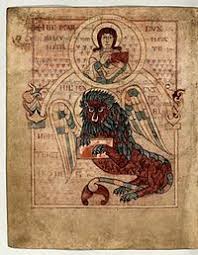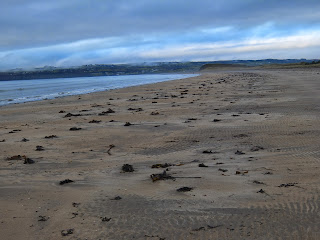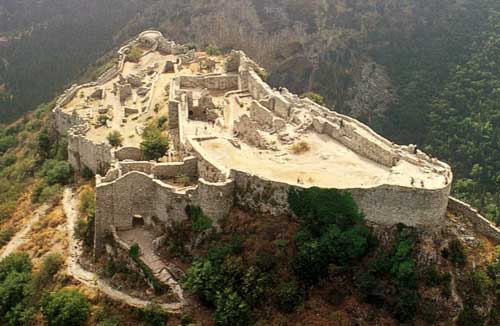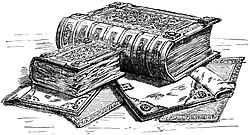This month, September, sees the anniversary of the first two battles of the Norman Invasion of 1066, Fulford Gate and Stamford Bridge. The Battle of Hastings occurred three weeks later, on October 14th, 1066. The story of the events leading up to the Battle of Hastings and the battle itself are famously recorded by 11th century English embroiderers on the Bayeux Tapestry, thought to be commissioned by Bishop Odo, William's half brother, for his church at Bayeux in Normandy. Some Tapestry scholars think that the Tapestry was designed in Canterbury but that its panels were embroidered in both Wilton Abbey and in Canterbury workshops. One reason for this thought is that if you study the wide angle pictures and the small vignettes, you realise that the first half of this work tells the Godwin story and the second the events around the actual Norman Invasion. The death of Edward the Confessor divides the two sides of the story as it falls right in the Tapestry's centre section. Structurally this event links both as well as being the crucial factor that heralded The Norman Conquest.
 |
| Above: The Death of King Edward from The Bayeux Tapestry |
Edith Godwin, King Harold's sister Edward the Confessor's widow, was one of the most famous English embroiderers of the time. She was patron of Wilton Abbey where there was a school for young noblewomen and embroidery workshops. It is very likely that Dowager Queen Edith wanted to tell her family's story and she may have been involved in the overall plan for the Tapestry's dialogue. She was pragmatic and after Conquest she is one of the few English landowners recorded in The Doomsday Book who retained all of their pre-Conquest property. When she died in 1075 King William gave her a state funeral in Westminster where she was honoured and buried beside her saintly husband. She was not ignored by the Norman nobility and retired after The Conquest to Wilton Abbey.
 |
| Queen Edith |
English textiles had a reputation for quality on the continent. Fibres used in the production of these textiles were wool, silk which was imported, and linen. Flax was the best known plant fibre used in the Anglo-Saxon period. The plants were harvested by pulling up whole plants, which were then dried. The seed pods were removed by using a wooden toothed rippler and stems were placed in water for some weeks, a process known as retting. Once the stems had partly decomposed fibres could be removed from the tough outer surface. They were pounded with wooden mallets and using a scutching knife the Anglo-Saxon flax worker would move up and down the flax stems against a vertical wooden board to remove the fibres. They were heckled using long iron teeth to clean and separate them ready for spinning. Quite a process! Linen was the background material used for The Tapestry. The embroidery on The Bayeux Tapestry depictions is of wool, not silk.
 |
| Scutching knives |
Only three great embroideries survive from the Anglo-Saxon period.
The Bayeux Tapestry is the largest at 70m.
The Durham embroideries were designed during the early 10th century and were discovered in the tomb of St Cuthbert. The collection has an embroidered stole, maniple and a girdle, which are closely related in design and are embroidered with gold and silk threads on silk fabric. They are thought to be Southern English work and the first two items have inscriptions to show when they were commissioned between 909 and 916.
The third embroidery from this period comprises of gold thread and silk on linen. The pieces that survive are thought to have been commissioned for an altar frontal decoration. This embroidery is influenced by Anglo-Saxon art from
The Book of Cerne and the Brunswick Casket. However
, scholars think that they may have
a Rhine-Meuse origin that is, in fact, influenced by Anglo-Saxon art.
 |
| From the Book of Cerne |
Research suggests that England was pre-eminent amongst European Nations for embroidery during the Middle Ages, not just the early Middle Ages. It was a great art never since equalled in design, technique or the quality of the materials employed. It was much sought after. St Aldhelm Bishop of Sherbourne referred to the skill of Anglo-Saxon women saying
'The shuttles, not filled with purple only but with various colours are pushed here and there amongst the thick spreading threads, and then with the art of embroidery they adorn all woven work with groups of figures.'
William of Poitiers, 11th C, wrote,
'The women of England are very skilled with the needle and in the matter of tissues of gold.'
 |
| King Harold from The Bayeux Tapestry |
Finally, in the Domesday Book, two specialist English embroiderers are mentioned by name, Alwid and Leviet who worked on textiles for the king and queen. Interestingly, too, Dowager Queen Edith, Edward the Confessor's wife, was reputed as skilled in d'or argent work and she is said to have dispensed beautiful works from her own workrooms and to have embroidered robes for the king. It is, I suggest, very likely that this talented aging queen had a hand in the execution of the beautiful Bayeux Tapestry.
Bibliography
English Medieval Embroidery by AG Christie, Oxford: The Clarendon Press.
Anglo-Saxon Crafts by Kevin Leahy, Gloustershire: Tempus.
The Blackwell Encyclopaedia Of Anglo-Saxon England, Oxford: Blackwell Publishing ltd.
Carol McGrath is the author of
The Handfasted Wife, the story of Edith-Swan-Neck, King Harold II's Handfasted wife, an historical fiction, published by Accent Press.
http://www.amazon.co.uk/The-Handfasted-Wife-ebook/dp/B00CL7QBVM/ref=sr_1_1?s=books&ie=UTF8&qid=1379833849&sr=1-1&keywords=The+Handfasted+Wife


















.jpg)











.jpg)


.jpg)



.jpg)




.jpg)





.jpg)